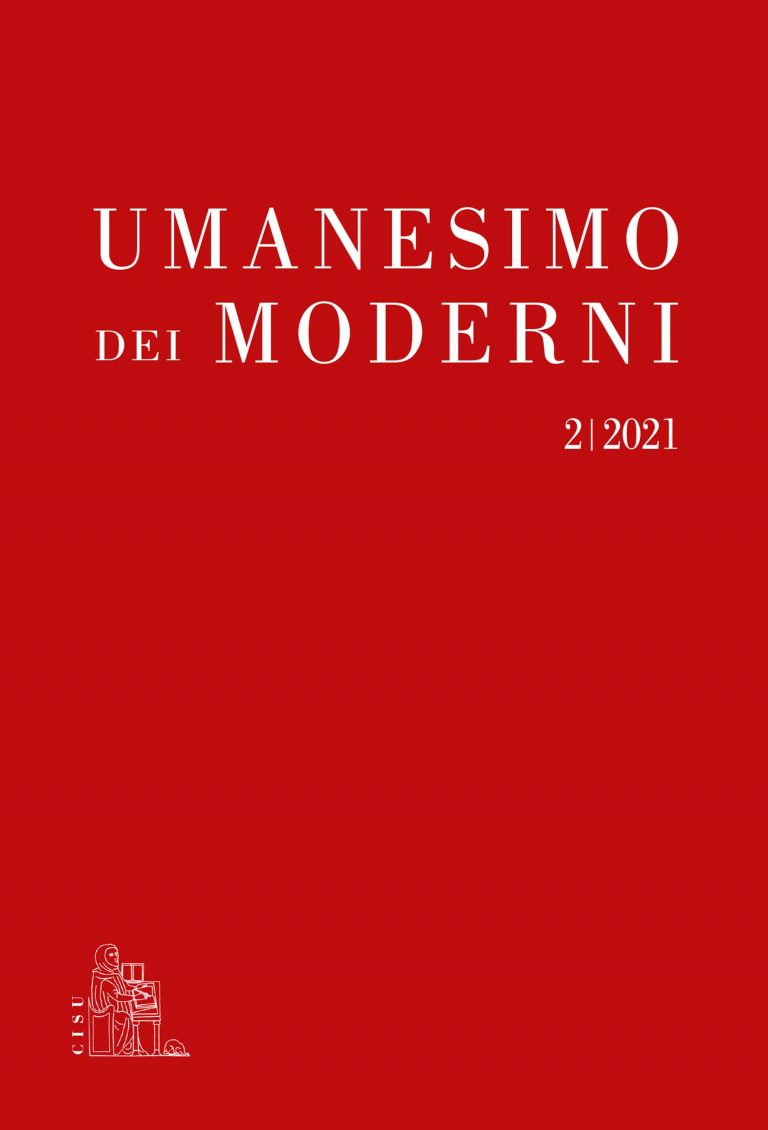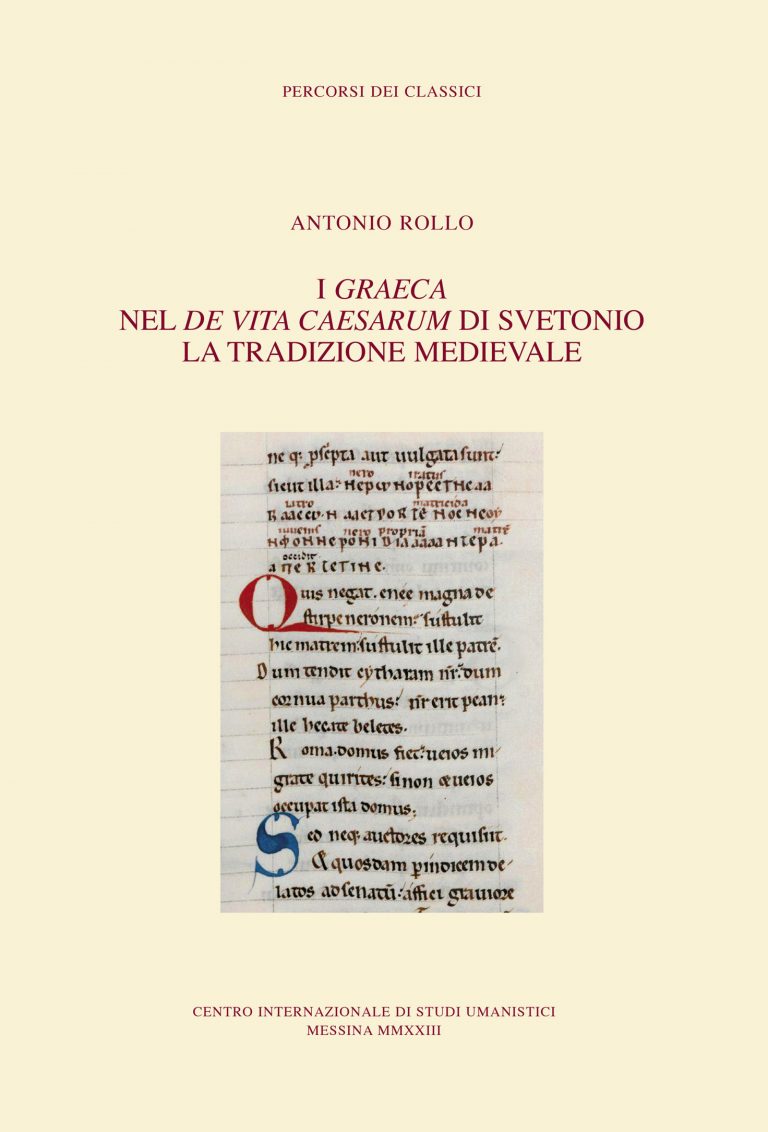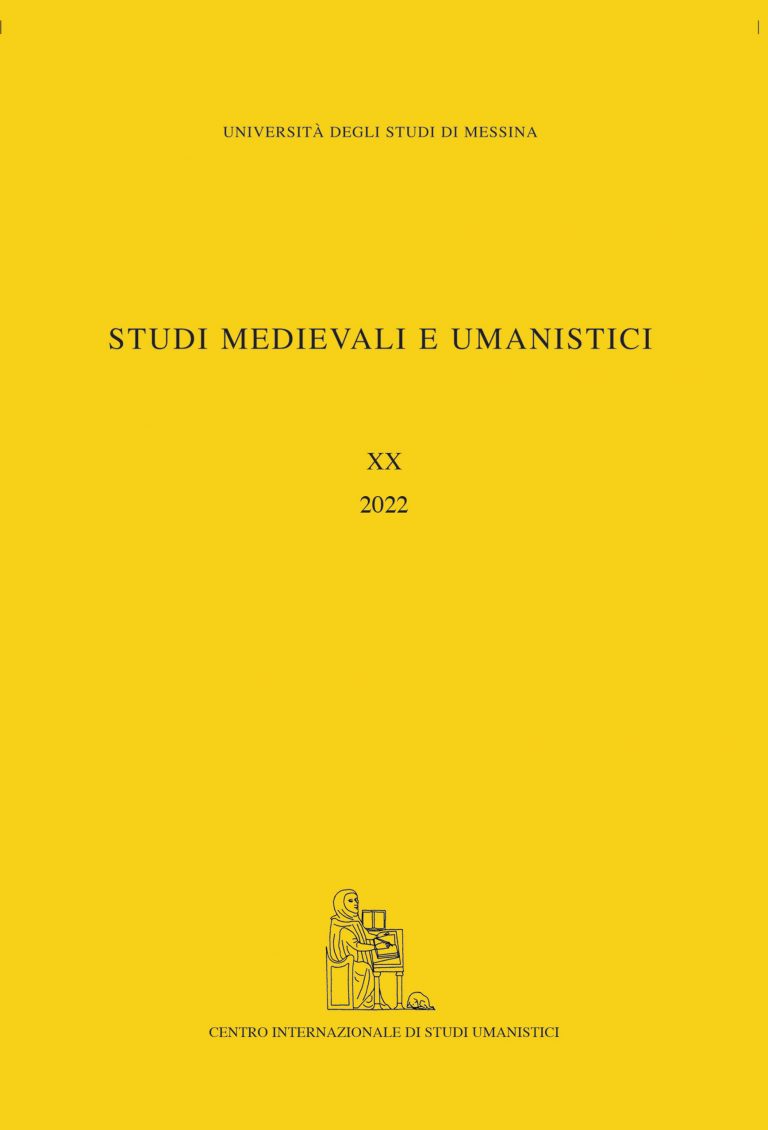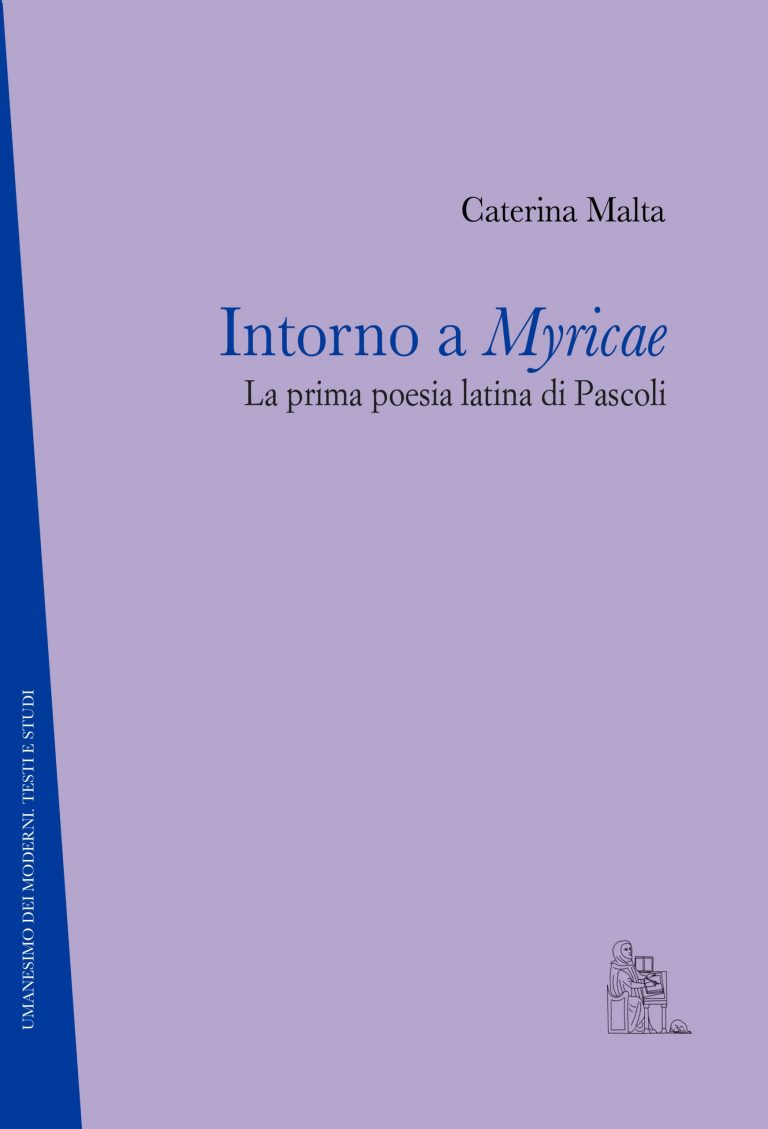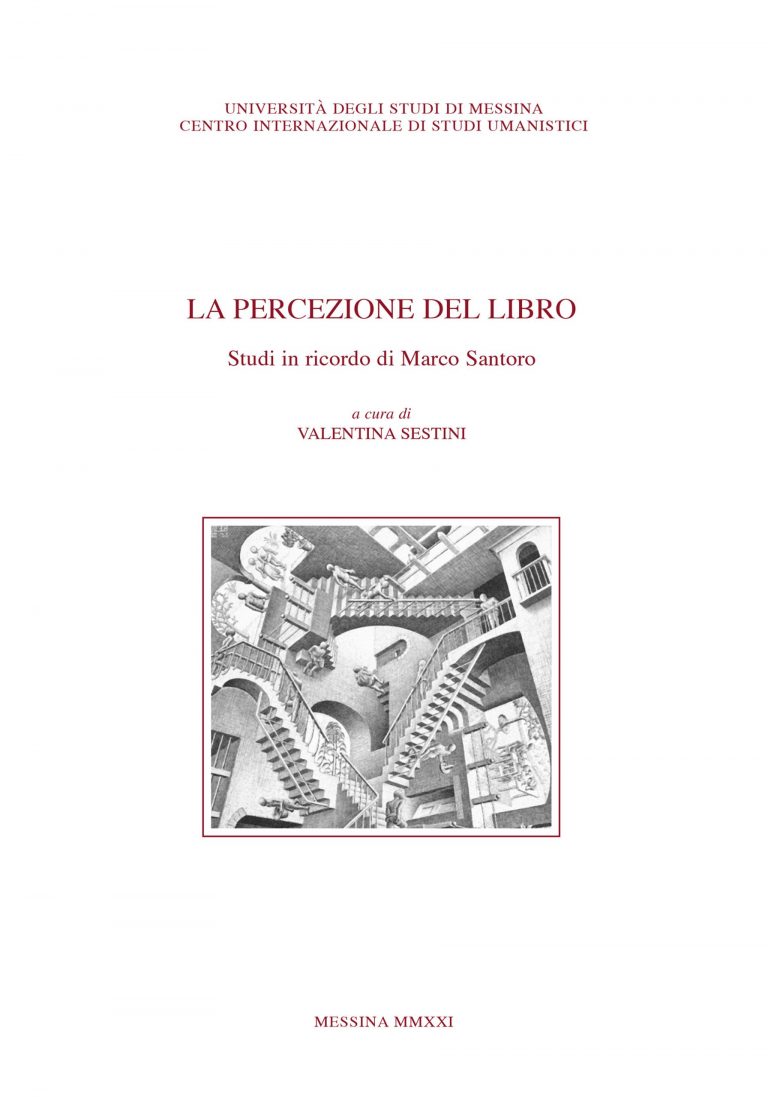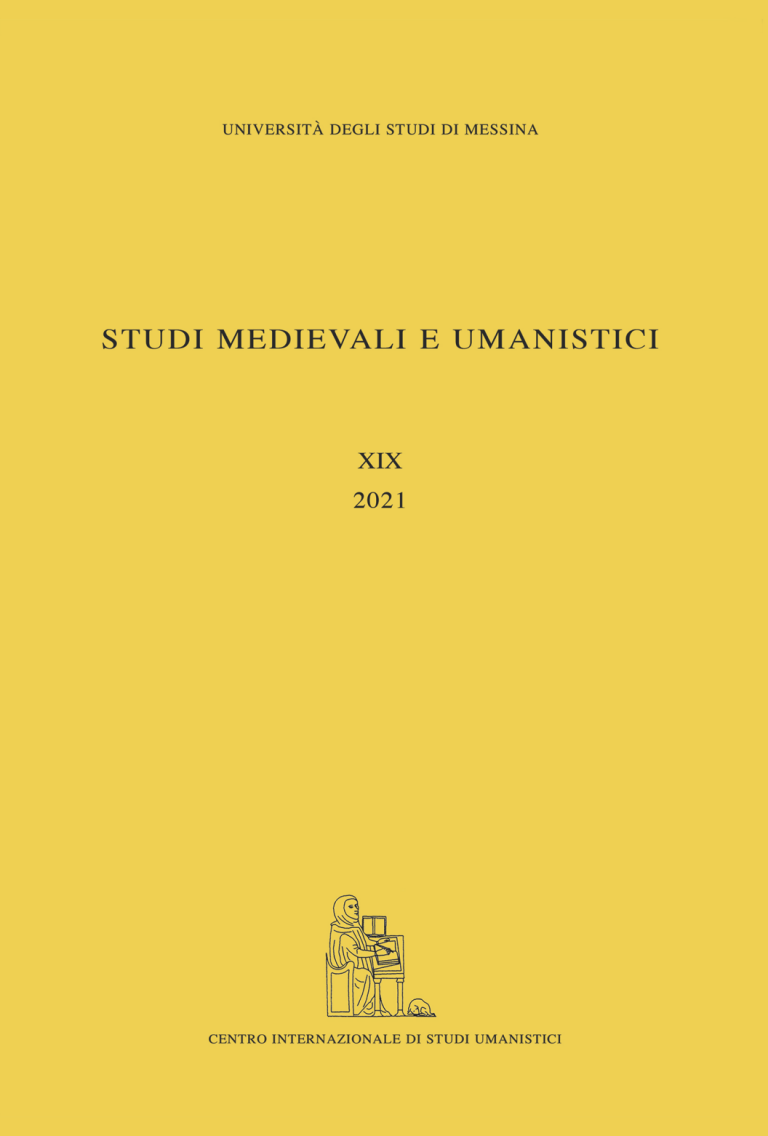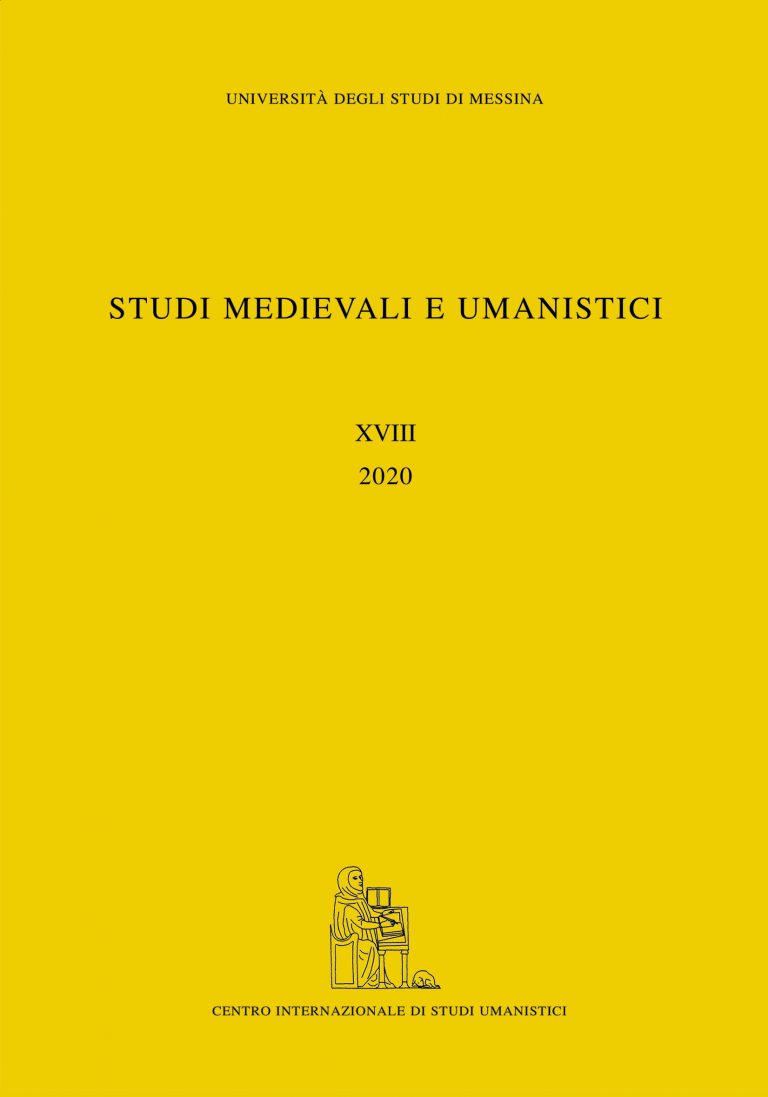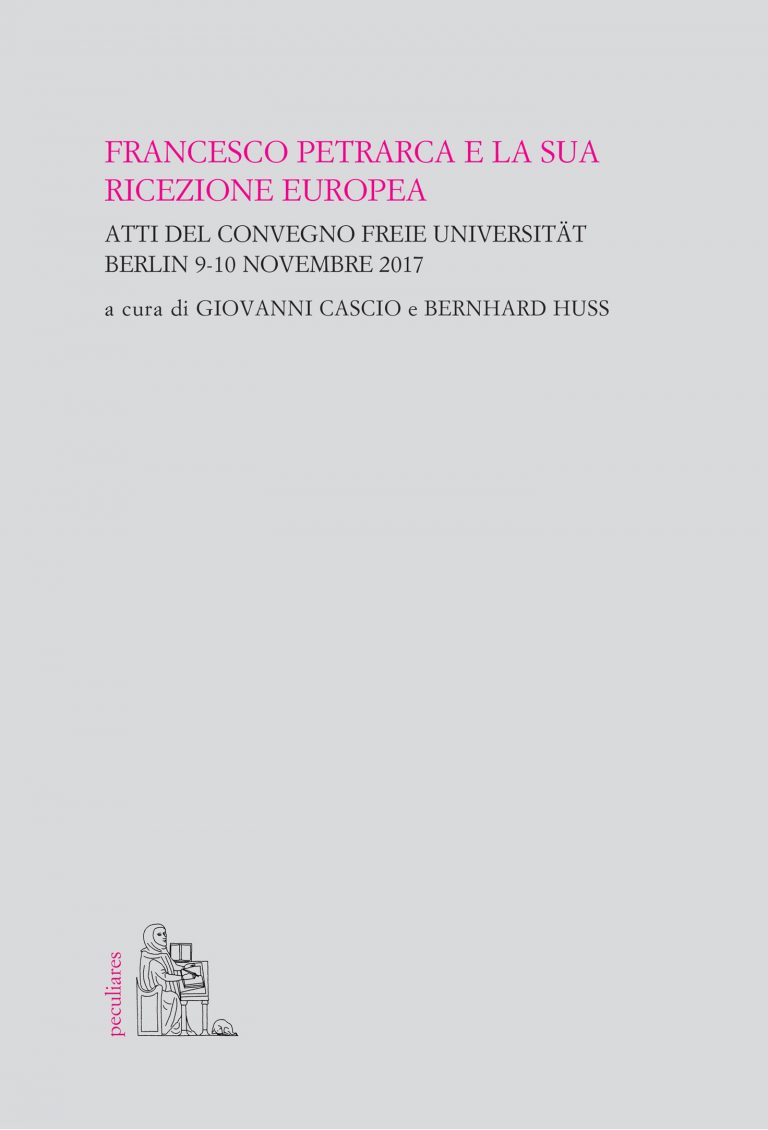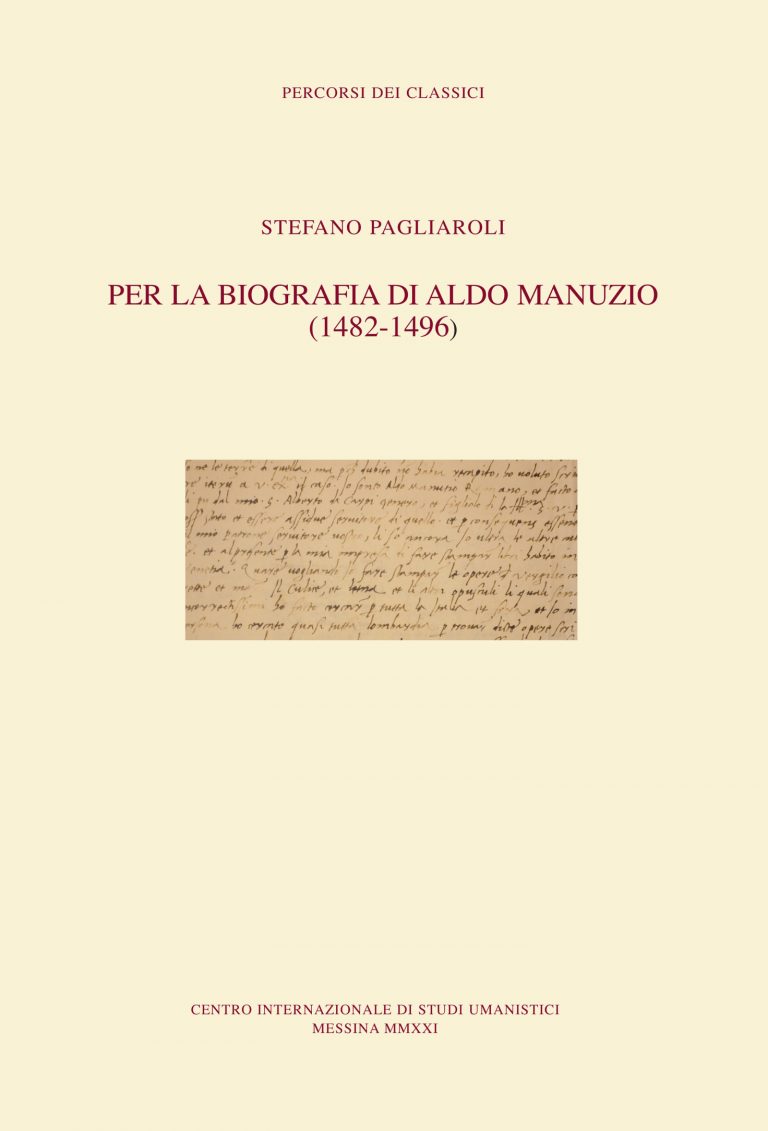2 | 2021 Messina, Centro Internazionale di Studi Umanistici, 2020, 320 pp.; 25 cm. ISSN 2724-0835 ISBN 978-88-87541-84-7 € 70 INDICE GENERALE Vincenzo Fera, Edizioni in cerca d’identità Giovanni Barberi Squarotti, «Con la coscienza di compiere un dovere»: i Poemi del Risorgimento nell’edizione di Maria Pascoli (1913) Massimo Castoldi, Giovanni Pascoli: varianti d’oltre tomba Giorgio Forni, Maria editrice di Giovanni. Qualche caso dantesco e il Piccolo Vangelo Luca Verrelli, Per l’edizione delle prose pascoliane: i Discorsi Annarita Zazzaroni, Pubblicare i testi teatrali: Gretchen’s Tochter – La figlia di Ghita Caterina Malta, «Un complesso sistema d’edifici, lasciato a mezzo».…
Categoria: Novità
I Graeca nel De Vita Caesarum di Svetonio. La tradizione Medievale
di Antonio Rollo Messina, Centro Internazionale di Studi Umanistici, 2023, 258 pp.; 25 cm. ISBN 978-88-87541-89-2 € 50 INDICE GENERALE Premessa Abbreviazioni bibliografiche I. Il greco nell’Occidente medievale II. Gli studi sulla trasmissione del De vita Caesarum III. I graeca 1. Il testo degli inserti greci 2. Le caratteristiche dell’alfabeto greco nei codici più antichi 3. Tipologie di alterazione del greco 4. Modalità di copia del greco nel contesto latino 5. La mimesi dei graeca nel processo di trascrizione IV. La tradizione medievale 1. I graeca degli esemplari più antichi 2. Gli interventi sul Par. lat. 6116…
Studi medievali e umanistici, XX
XX (2022) Messina, Centro Internazionale di Studi Umanistici, 2022, 286 pp., tavv. VIII; 25 cm. ISSN 2035-3774 € 80 SOMMARIO Vincenzo Fera, Nodi ecdotici petrarcheschi: il caso di prestringere/perstringere Silvia Fiaschi, Un ritrovato codice aragonese di Silvestro Galeota per il duca Pierre II de Bourbon: cronaca di una scoperta Luigi Orlandi, Sull’epigramma greco-latino in morte di Bessarione Paola de Capua, Filippo Beroaldo e la descrizione della villa di Pontecchio di Mino de’ Rossi Paola Megna, Dalla versione omerica alla filologia dei Miscellanea: Poliziano vs Merula Giovanni Cascio, Intarsi lucanei. Il pianto di Cesare nell’Itinerarium petrarchesco TESSERE S. Rocchi,…
Intorno a Myricae. La prima poesia latina di Pascoli
di Caterina Malta Messina, Centro Internazionale di Studi Umanistici, 2022, 200 pp., tavv. VIII; 25 cm. ISBN 978-88-87541-94-6 € 35 INDICE GENERALE I. «Quae dixi gracili carmina tibia». Il modello oraziano II. Verso una nuova estetica dell’antico Precorrimenti di poetica nella Iani Nemorini Silvula Sperimentalismi grafici. Pascoli, Carandini, Nigra e il problema della scrittura del latino III. Gli abbozzi e l’edizione Iani Nemorini Silvula: testo e traduzione INDICI Indice delle tavole Indice dei manoscritti e delle fonti d’archivio Indice dei nomi
La percezione del libro. Studi in ricordo di Marco Santoro
a cura di Valentina Sestini Messina, Centro Internazionale di Studi Umanistici, 2021, 276 pp.; 25 cm. ISBN 978-88-87541-91-5 € 45 INDICE GENERALE Valentina Sestini, Al lettore Giancarlo Volpato, Incunaboli e cinquecentine ritrovati nella Biblioteca Capitolare di Verona Carmen Puglisi, Boezio e Aristotele in uno sconosciuto incunabolo della Biblioteca Regionale ‘Giacomo Longo’ di Messina Monica Bocchetta, Tra testo e immagini. Il rosario di Luis de Granada nelle edizioni di Giuseppe De Angelis (Roma, 1573-1577) Domenico Ciccarello, Un letterato e mestierante del libro tra Austria e Sicilia: Juan Silvestre Salva Giuseppe Lipari, Libri, editoria e pubblico nella Messina di…
Studi medievali e umanistici, XIX
XIX (2021) Messina, Centro Internazionale di Studi Umanistici, 2021, 320 pp., 25 cm. ISSN 2035-3774 € 80 SOMMARIO Aldo Onorato, Il volgarizzamento dell’ultima epistola di Coluccio Salutati a Giovanni da San Miniato Giuseppe Nastasi, Natale Conti traduttore del Περὶ σχημάτων di Alessandro L’OPERA DI PETRARCA. CANTIERI DI LAVORO. Seminario internazionale (Messina, Accademia Peloritana dei Pericolanti, 20-21 febbraio 2020) Silvia Rizzo, Personaggi ‘nascosti’ negli epistolari di Petrarca Silvia Rizzo, L’epistola di Lombardo della Seta a destinatario ignoto Péter Ertl, Fra Giovanni Colonna e una ignota redazione γ della Familiare II 9 Marco Petoletti, Il De vita solitaria e le sue fonti nascoste Sara…
Radiografia del Myrmedon di Giovanni Pascoli
di Salvatore Guarino Messina, Centro Internazionale di Studi Umanistici, 2022, 136 pp.; 25 cm. ISBN 978-88-87541-90-8 € 30 INDICE GENERALE STEFANO GRAZZINI, La formica di Pascoli, fra Virgilio, Esopo e Alfred Edmund Brehm I. Un poema didascalico di fine Ottocento Myrmedon e i Ruralia Il formicaio come l’alveare: il modello georgico II. «in terrae venas obscura vetustas» La misteriosa origine dei giacimenti minerari Il dramma dei carusi siciliani III. la vista delle formiche: scienza e poesia Il fenomeno della ‘dispersione ottica’ Ancora sulla resa dei concetti scientifici IV. la società del formicaio Le ‘schiave’ La ‘legionaria’ V.…
Studi medievali e umanistici, XVIII
XVIII (2020) Messina, Centro Internazionale di Studi Umanistici, 2020, 408 pp., tavv. VIII; 25 cm. ISSN 2035-3774 € 80 SOMMARIO Vincenzo Fera, Archeologia di Valchiusa: «Chiare, fresche et dolci acque» Stefano Rocchi, Accursiana I. Il ciclo epigrammatico della Fuggerkapelle ad Augsburg LA TRASMISSIONE DEI TESTI GRECI E LATINI DAL MANOSCRITTO ALLA STAMPA. Atti del convegno, Milano, 11 dicembre 2018 Stefano Martinelli Tempesta, La trasmissione dei testi greci e latini dal manoscritto alla stampa. Considerazioni introduttive Antonio Rollo, La tradizione umanistica dei graeca di Svetonio Luigi Orlandi, Preistoria di un’edizione mancata: il Macrobio di Gaza e Bussi David…
Francesco Petrarca e la sua ricezione europea
Atti del convegno Freie Universität (Berlin, 9-10 novembre 2017), a cura di Giovanni Cascio e Bernhard Huss Messina, Centro Internazionale di Studi Umanistici, 2020, 302 pp.; 25 cm. ISBN 978-88-87541-85-4 € 60 INDICE GENERALE G. Cascio – B. Huss, Premessa M. Feo, Friede, Friede, Friede! Petrarcas Ruf an die Nachwelt M. Berté, Le antiche biografie di Petrarca M. Petoletti, Nuove considerazioni sulla biblioteca di Petrarca: le Epistulae di Ambrogio e le Res rusticae di Varrone G. Perucchi, Fortuna dei postillati petrarcheschi. Giovanni Dondi, Plinio e Vitruvio V. Fera, Problemi ecdotici ed esegetici delle postille nel ‘codice degli abbozzi’ F.…
Per la biografia di Aldo Manuzio (1482-1496)
di Stefano Pagliaroli Messina, Centro Internazionale di Studi Umanistici, 2021, 368 pp., tavv. XVI; 25 cm. ISBN 978-88-87541-86-1 € 60 INDICE GENERALE Premessa Abbreviazioni bibliografiche Lo scambio epistolare tra Aldo e Poliziano Tra le avanguardie umanistiche degli anni Ottanta del Quattrocento Da Ferrara a Mirandola Manuzio a Mirandola e gli esordi del carteggio tra Pico e Poliziano Firenze, Mantova, Ferrara, Padova e Venezia: i primi anni Ottanta La permanenza a Carpi La partenza di Pico per Pavia e di Manuzio per Carpi Pico da Carpi a Firenze nel 1484 Manuzio a…

